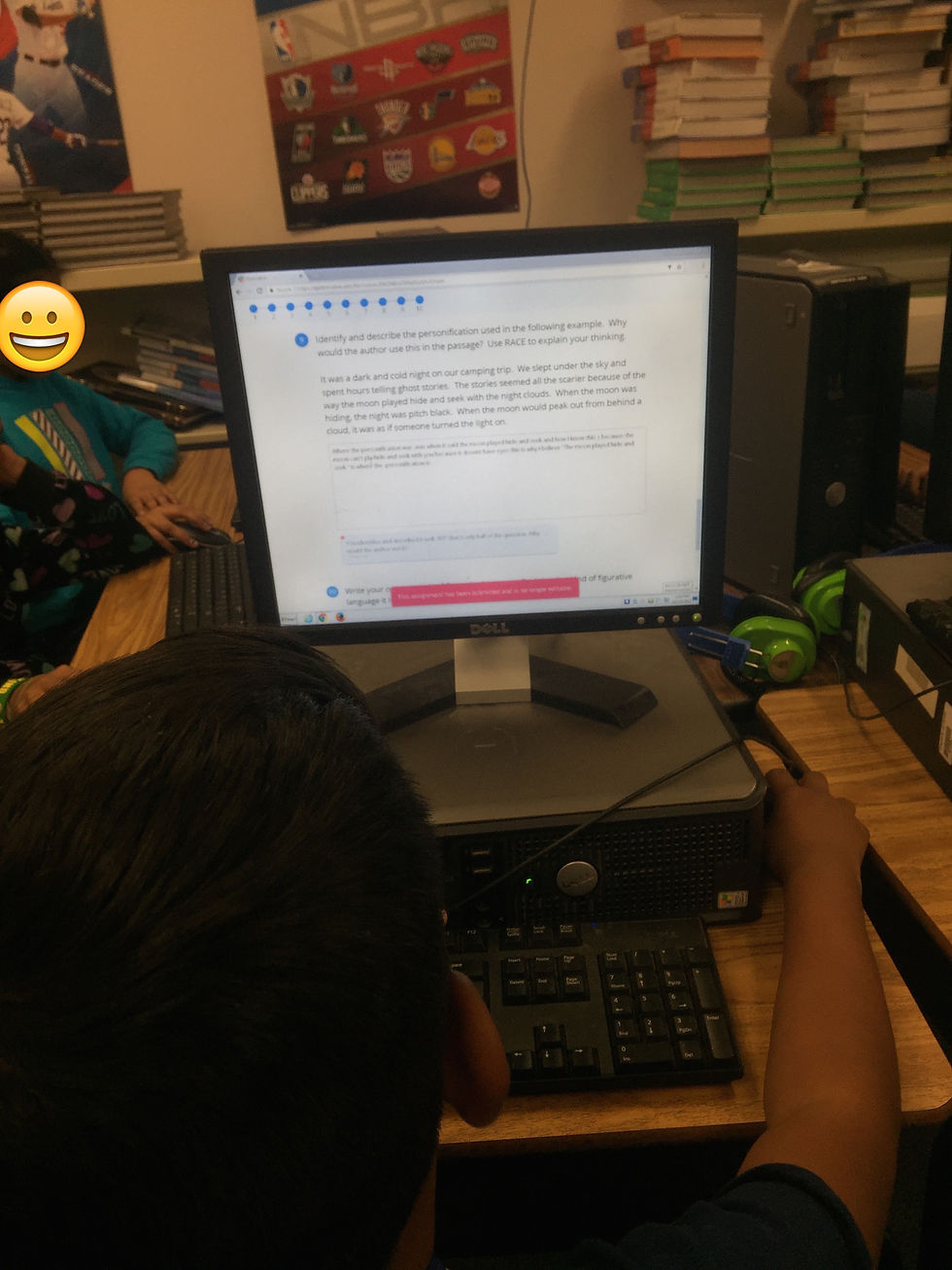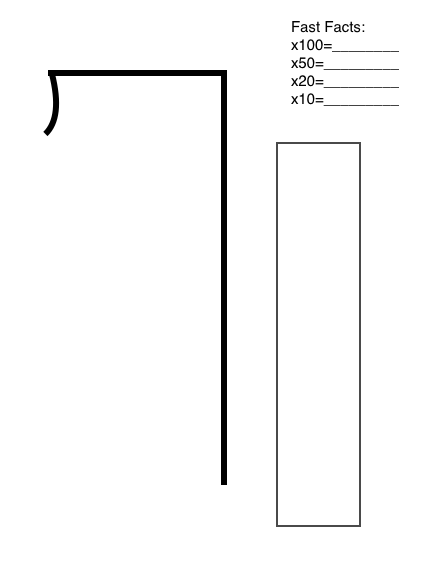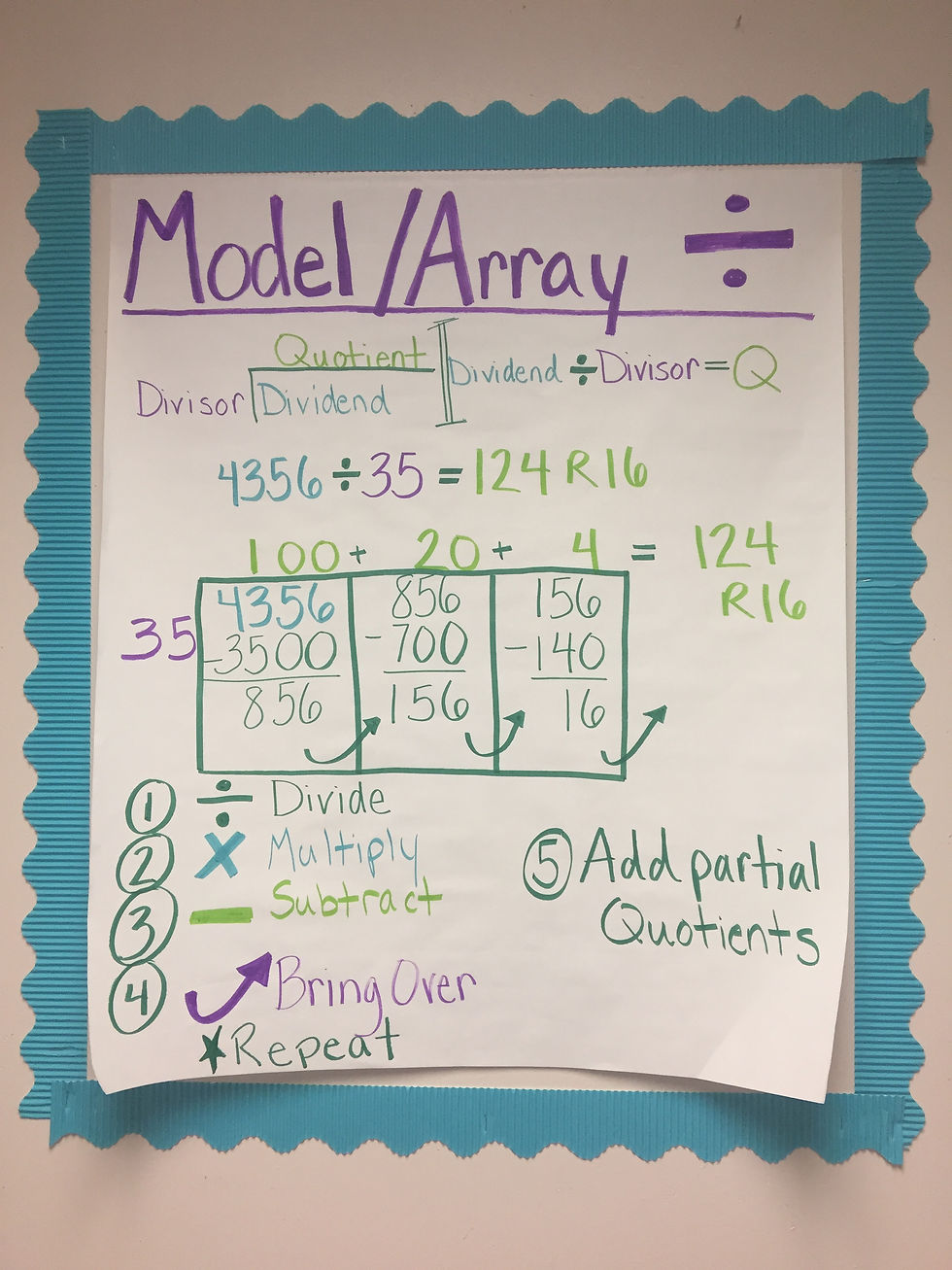
Field Notes:
Guiding Young Global Citizens



InTASC Standard #3
The teacher works with others to create environments that support individual and collaborative learning, and that encourage positive social interaction, active engagement in learning, and self motivation.
I use a combination of partner, table, individual, and whole group activities to encourage a positive environment that holds all students accountable and encourages their active engagement and effective communication using academic language. During classroom conversations, students are expected to use relevant academic vocabulary and practice active listening to their peers. All students must engage--and they want to because of the positive environment I create that encourages honest inquiry--in verbal, paper-based, and technological discourse. Additional details and references to the performance measures of the InTASC are noted by each picture.
"One's destination is never a place but a new way of seeing things."
-Henry Miller
InTASC Standard #2
The teacher uses understanding of individual differences and diverse cultures and communities to ensure inclusive learning environments that enable each learner to meet high standards.
Addressing individual student needs is essential for helping each child reach the high standards set forth for them. I work with students in small groups so that I can get to know each child's academic needs, interests, and learning preferences. I also am able to access their prior knowledge though targeted instructional dialogue. I plan with the intention of gathering relevant information about what may work for students and then I think on my feet to adjust based on the interaction with students. With this mindset of addressing each child, I help each child achieve high standards of academic success. Additional details and references to the performance measures of the InTASC are noted by each picture.
As a "travel agent", or facilitator of learning experiences, my goal is for students to thrive as they work independently, collaborate, and communicate effectively with peers and adults. These pictures highlight moments along students' journeys.

InTASC Performance 3(h) The teacher intentionally builds learner capacity to collaborate in face-to-face and virtual environments through applying effective interpersonal communication skills. Students work together to define and find examples of figurative language. Groups were to agree on and discuss examples. In addition, team members helped each other deepen understanding by asking rigorous questions and ensuring that each team member understood before moving to the next task.

InTASC Performance 3(c) The teacher collaborates with learners and colleagues to develop shared values and expectations for respectful interactions, rigorous academic discussions, and individual and group responsibility for quality work. The expectations for collaboration are set out though conversations with students in which I solicit their input about how to effectively and respectfully engage with one another. Students create the classroom guidelines and I facilitate as needed.

InTASC Performance 3(c) The teacher collaborates with learners and colleagues to develop shared values and expectations for respectful interactions, rigorous academic discussions, and individual and group responsibility for quality work. In this "I Have, Who Has" game, students must communicate using academic vocabulary and the group must work together to provide checks and balances on each other to achieve mastery.

InTASC Performance 3(h) The teacher intentionally builds learner capacity to collaborate in face-to-face and virtual environments through applying effective interpersonal communication skills. Students work together to define and find examples of figurative language. Groups were to agree on and discuss examples. In addition, team members helped each other deepen understanding by asking rigorous questions and ensuring that each team member understood before moving to the next task.

InTASC Standard 2(d) The teacher brings multiple perspectives to the discussion of content, including attention to learners’ personal, family, and community experiences and cultural norms. Students in this class LOVE to sing and rap. I found relevant materials that bring in another voice to the classroom and engage students. Be sure to look at the video on the bottom of this page to see this rap in action and to reference the original song.

InTASC Standard 2(a) The teacher designs, adapts, and delivers instruction to address each student’s diverse learning strengths and needs and creates opportunities for students to demonstrate their learning in different ways. Students participate in Quizzizz games to show their current knowledge and ability to apply that knowledge. With this information, I adjust next steps and the instructional plan to meet students' needs.

InTASC Standard 2(c) The teacher designs instruction to build on learners’ prior knowledge and experiences, allowing learners to accelerate as they demonstrate their understandings. I use Mental Math sessions (Number Talks) at the beginning of each math lesson to access prior knowledge. If students are excelling during this time, I move quickly into new content. Alternatively, I use this time to gauge if I need to review prerequisite skills. The most important part: How do you know?

InTASC Standard 2(d) The teacher brings multiple perspectives to the discussion of content, including attention to learners’ personal, family, and community experiences and cultural norms. Students in this class LOVE to sing and rap. I found relevant materials that bring in another voice to the classroom and engage students. Be sure to look at the video on the bottom of this page to see this rap in action and to reference the original song.



InTASC Standard #4
The teacher understands the central concepts, tools of inquiry, and structures of the discipline(s) he or she teachers and creates learning experiences that make these aspects of the discipline accessible and meaningful for learners to assure mastery of the content.
All students must be able to access the content taught. In mathematics, I ensure that all students had appropriately differentiated activities. All students have access to material using visual aids, video, hands-on, and collaborative activities. Each lesson is carefully crafted to tap into the strengths of each learner's style and help the student make sense of the material through their own lens. Additional details and references to the performance measures of the InTASC are noted by each picture.

InTASC Performance 6(a) The teacher balances the use of formative and summative assessment as appropriate to support, verify, and document learning. I check in with students during formative periods to have students self-assess and self-report understanding. Students use defined hand signals to express confidence, signal a question, or express the need for additional help.

InTASC Performance 6(d) The teacher engages learners in understanding and identifying quality work and provides them with effective descriptive feedback to guide their progress toward that work. During a GoFormative session, students write responses to questions about literature. During these sessions, I can see the progress of each child and communicate directly through formative comments that are immediate, descriptive, and offer guidance. This helps students understand their performance.

InTASK Performance 6(d) The teacher engages learners in understanding and identifying quality work and provides them with effective descriptive feedback to guide their progress toward that work. ClassKick allows me to give immediate, individual, and relevant feedback to the entire class. I can write comments as students work to intervene when a student misunderstands or to encourage a student on the right track. See my note in red to the side as the student began this task.

InTASC Performance 6(a) The teacher balances the use of formative and summative assessment as appropriate to support, verify, and document learning. I check in with students during formative periods to have students self-assess and self-report understanding. Students use defined hand signals to express confidence, signal a question, or express the need for additional help.
InTASC Standard #6
The teacher understands and uses multiple methods of assessment to engage learners in their own growth, to monitor learner progress, and to guide the teacher's and learner's decision making.
Decisions about next steps are rooted in constant assessment with, of and by students. I seek feedback from students about how they are feeling about the material by check-ins using hand signals. I also engage with students in real-time using tools such as Classkick and GoFormative. While students are working, I can offer real-time feedback using digital tools so that I can correct misconceptions immediately and so that I can acknowledge deep thinking. These pictures show hand signals in action and students engaging with the assessment methods that help learners monitor their own growth and receive immediate formative feedback. In addition to these tools listed, I use Quizzizz and Kahoot. Additional details and references to the performance measures of the InTASC are noted by each picture.
InTASC Standard #8
The teacher understands and uses a variety of instructional strategies to encourage learners to develop deep understanding of content areas and their connections, and to build skills to apply knowledge in meaningful ways.
Students need me to use a variety of instructional strategies so that each child accesses and masters content. I engage with students during whole group with varied representations of information, interspersed team and partner accountable talks, and I pose challenging questions that ensure all students think deeply about content. I also seek to make tasks interesting and relevant so that students apply their new knowledge in ways that build meaningful connections with their prior knowledge. Additional details and references to the performance measures of the InTASC are noted by each picture.

InTASC Performance 4(a) The teacher effectively uses multiple representations and explanations that capture key ideas in the discipline, guide learners through learning progressions, and promote each learner’s achievement of content standards. The following pictures show the learning progression of fifth grade division. Students learned three methods of long division and had the following supports to aid in strong understanding. This is an anchor chart used in class.

InTASC Performance 4(a) The teacher effectively uses multiple representations and explanations that capture key ideas in the discipline, guide learners through learning progressions, and promote each learner’s achievement of content standards. The following pictures show the learning progression of fifth grade division. Students learned three methods of long division and had the following supports to aid in strong understanding. This is a division frame used by students.

InTASC Performance 4(a) The teacher effectively uses multiple representations and explanations that capture key ideas in the discipline, guide learners through learning progressions, and promote each learner’s achievement of content standards. The following pictures show the learning progression of fifth grade division. Students learned three methods of long division and had the following supports to aid in strong understanding. This is an anchor chart used in class.

InTASC Performance 4(a) The teacher effectively uses multiple representations and explanations that capture key ideas in the discipline, guide learners through learning progressions, and promote each learner’s achievement of content standards. The following pictures show the learning progression of fifth grade division. Students learned three methods of long division and had the following supports to aid in strong understanding. This is an anchor chart used in class.

InTASC Performance 8(f) The teacher engages all learners in developing higher order questioning skills and metacognitive processes. Students who have a very strong conceptual understanding are able to apply material in original ways. Students access their metacognition by writing their own test questions and then using these to help other students grow, too. In my class, peers teach one another so that both students learn to ask tough questions and demonstrate deep conceptual understanding.

InTASC Performance 8(c) The teacher collaborates with learners to design and implement relevant learning experiences, identify their strengths, and access family and community resources to develop their areas of interest. Students worked in groups to write definition of and create examples of figurative language. Students then voted on the best definitions and examples. They were actively engaged in the relevant learning experience as they used their own words and interests for the examples.

InTASC Performance 8(b) The teacher continuously monitors student learning, engages learners in assessing their progress, and adjusts instruction in response to student learning needs. Students regularly provide me feedback about how an activity is progressing. Using established hand signals, students can alert me to questions, extra time needed, less time than allotted needed, and rate their confidence in the task. Based on this feedback, I adjust the lesson flow, content, or time.

InTASC Performance 8(f) The teacher engages all learners in developing higher order questioning skills and metacognitive processes. Students who have a very strong conceptual understanding are able to apply material in original ways. Students access their metacognition by writing their own test questions and then using these to help other students grow, too. In my class, peers teach one another so that both students learn to ask tough questions and demonstrate deep conceptual understanding.
Students learned the steps of long division using this rap by D-Villain. Students used gestures to remember the steps and solidify the steps in their minds.
To see the video students are watching, click here. Original video by D-Villain on YouTube.
Students worked together completing a Quizzizz activity about figurative language. They were, as you can see, thoroughly engaged and excited about performing well in this classroom competition. This kind of activity fosters a classroom culture of joy, rigor, teamwork, and accountability.